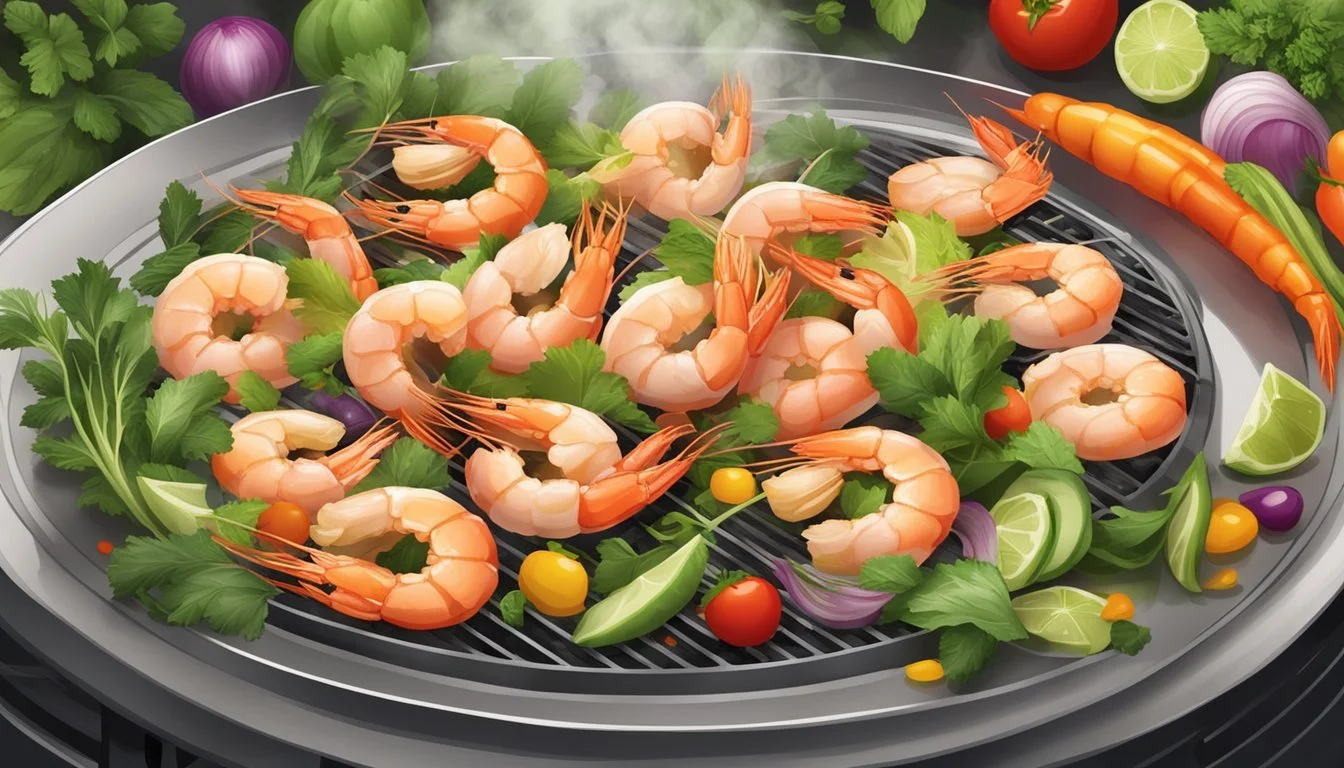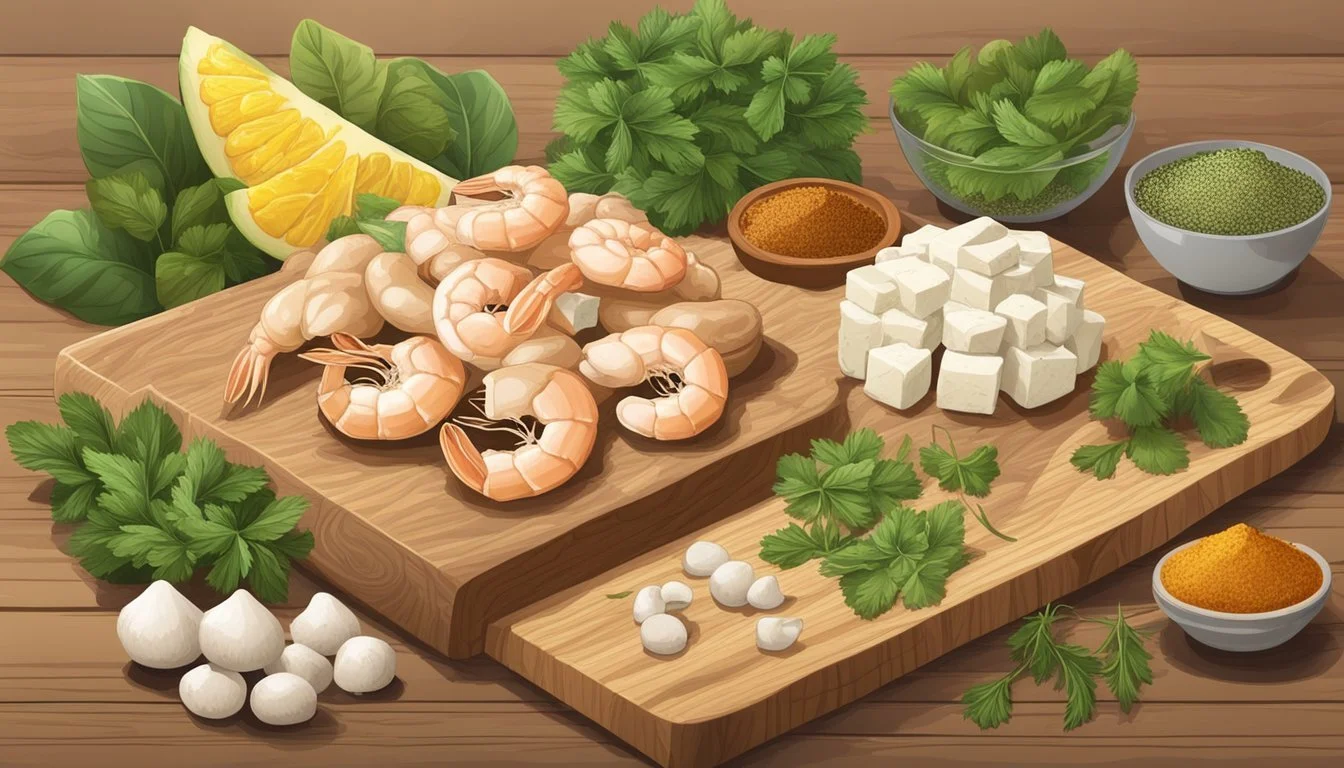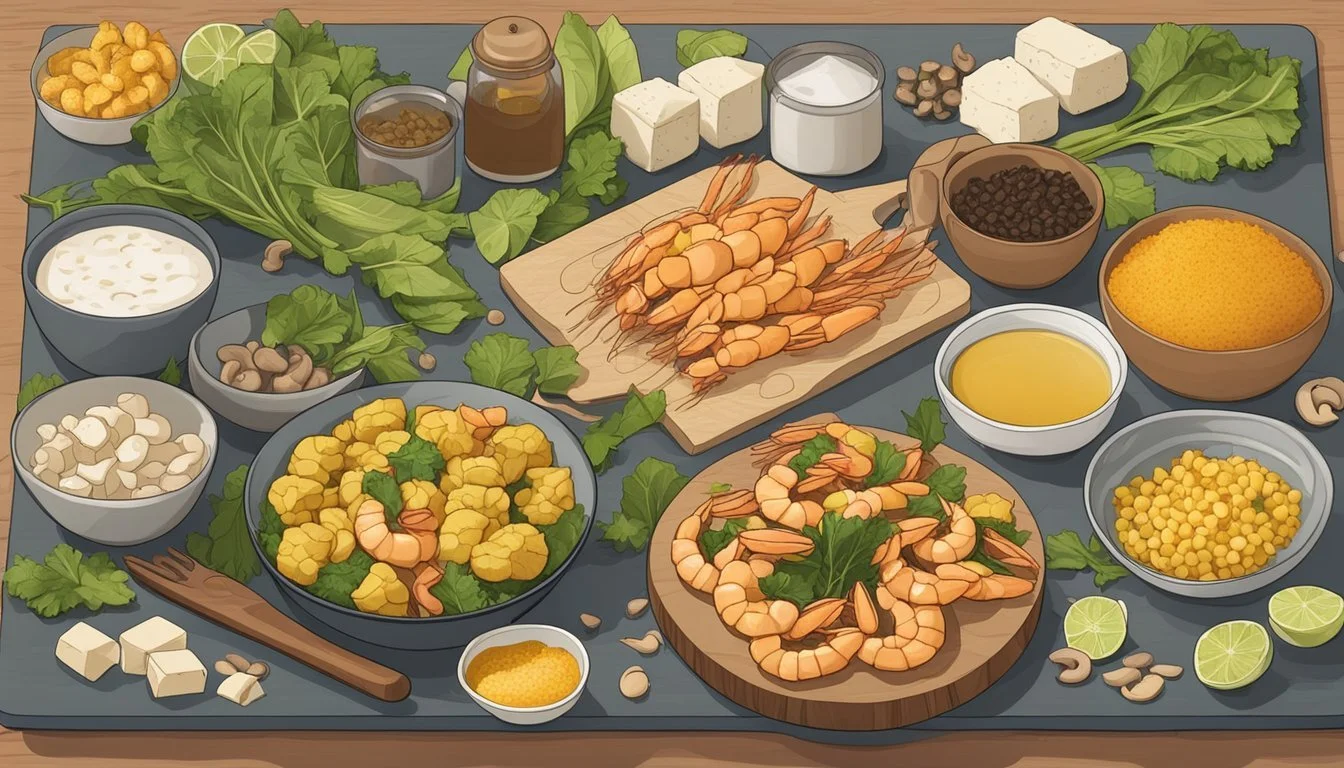Shrimp Substitutes
Delicious Alternatives for Seafood Lovers
Cooking without shrimp doesn't mean compromising on flavor or texture. There are numerous shrimp substitutes that cater to different dietary preferences and restrictions, whether due to allergies or a vegan lifestyle. These alternatives range from other types of seafood to vegan options, ensuring everyone can enjoy similar dishes without shellfish.
For those who enjoy seafood, options like langostino, lobster tails, scallops, and crayfish can make excellent substitutes. They provide a comparable texture and taste, making them great for replicating shrimp recipes. Individuals who need a shellfish-free diet can turn to white fish or even chicken as versatile replacements in various dishes.
Vegans and vegetarians have their pick of creative alternatives like tofu, king oyster mushrooms, and specially made vegan shrimp. These substitutes offer a similar mouthfeel and can be flavored to taste just like shrimp, making them a helpful addition to plant-based diets.
Understanding Shrimp Substitutes
Shrimp substitutes offer a variety of options for those with dietary restrictions or preferences. The substitutes can vary widely in health benefits, texture, and nutritional content.
Health and Allergies
For people with shellfish allergies, finding suitable substitutes for shrimp is paramount. Shrimp alternatives like fake shrimp made from plant-based ingredients or soy-based products offer safe options.
Many substitutes provide lower cholesterol levels, such as crayfish which only has 96 mg of cholesterol per serving.
When choosing these alternatives, consideration of allergens such as soy, nuts, and other components is essential to avoid triggering any food-related reactions. It's also helpful to look for substitutes that provide omega-3 fatty acids, vitamin B12, and other essential nutrients typically found in shrimp.
Texture and Flavor Profile
A good shrimp substitute should mimic both the texture and flavor of real shrimp. Options like langostino closely resemble shrimp with a similar smooth texture and mildly fishy taste. Chicken can also be used as it closely mimics shrimp's texture when properly seasoned.
Vegan alternatives like sweet potato "shrimp" can achieve a pleasing texture when prepared correctly, often relying on seasonings such as paprika, chilies, or cajun spices to achieve a shrimp-like flavor. Using fish sauce sparingly can also impart a umami quality.
Nutritional Value
Nutritional content is a key factor when selecting a shrimp substitute. Shrimp is known for its high protein content, as well as being rich in omega-3 fatty acids, iron, zinc, and vitamin B12. Many plant-based substitutes can fall short in these nutrients.
Crayfish and chicken, for instance, offer comparable protein levels and beneficial nutrients but may lack significant omega-3 fatty acids. It is essential to examine the nutritional labels of any alternatives to ensure a balanced intake of necessary vitamins and minerals to maintain a healthy meal.
Given these factors, selecting an appropriate shrimp substitute involves balancing health requirements, texture, flavor, and nutritional needs.
Popular Shrimp Alternatives
Popular shrimp alternatives vary from plant-based options to other types of seafood. These substitutes can cater to diverse dietary needs, whether for vegetarians, vegans, or individuals allergic to shellfish.
Vegetarian and Vegan Options
For those seeking plant-based alternatives, tofu and king oyster mushrooms are top choices. Tofu, known for its ability to absorb flavors, can mimic the texture of shrimp when marinated and cooked properly. King oyster mushrooms, with their meaty texture, offer a similar mouthfeel to shrimp.
Sweet potato is another creative option. Preparing sweet potato as a shrimp alternative involves creating a saltwater broth with ingredients like seaweed and boiling the sweet potatoes to infuse them with a sea-like flavor. Another popular vegan substitute is fake shrimp, made from various plant-based ingredients designed to replicate shrimp's texture and flavor.
Seafood-Based Substitutes
Seafood lovers can find numerous alternatives to shrimp. Langostino is a notable substitute, featuring meat from a long-tailed crustacean similar in taste to lobster and crab. The tails are particularly useful in recipes calling for shrimp.
Lobster and crayfish are also excellent options. Lobster, with its rich flavor, can be used in dishes where a more luxurious taste is desired. Crayfish, on the other hand, offers a similar calorie count with lower cholesterol, making it a healthier option.
Scallops and prawns can replicate shrimp's texture and are suitable for a variety of dishes. Surimi, a processed seafood product, is another effective shrimp replacement that delivers a similar flavor profile, often found in many Asian cuisines.
Other Alternatives
For those avoiding all types of seafood, chicken and white fish are viable alternatives. Chicken, especially when cut into small pieces, can substitute for shrimp in stir-fries and pasta dishes. White fish, like cod or haddock, offers a mild flavor and flaky texture that can work well in soups and salads.
Moreover, incorporating rice and beans into meals can replace shrimp in terms of providing protein and substance. These ingredients, while not mimicking the exact texture or taste, can ensure a nutritious and satisfying meal.
Each alternative serves a specific purpose, allowing flexibility for various tastes and dietary requirements. Adapting recipes with these substitutes ensures that everyone can enjoy dishes traditionally made with shrimp.
Culinary Applications
Culinary applications for shrimp substitutes vary widely, including cooking techniques that help replicate the texture and flavor of shrimp, and specific dishes where these substitutes can be effectively used.
Cooking Techniques
Cooking techniques for shrimp substitutes aim to mimic the flavor and texture of real shrimp. Marination is essential to infuse these substitutes with the desired flavors. Using a mixture of lemon juice, Old Bay seasoning, and minced garlic can enhance the taste profile.
For a salty taste reminiscent of shrimp, a saltwater broth can be employed. Ingredients like seaweed can contribute to an authentic seafood flavor. Sautéing substitutes in a lemon butter sauce or pan-frying in a skillet can help achieve the right texture. Langostino tails or prawns benefit greatly from these methods, effectively absorbing spices and marinades.
Dishes and Recipes
There are numerous dishes where shrimp substitutes excel. Shrimp scampi, often cooked with garlic, lemon juice, and butter, can be replicated with langostino tails or prawns. These substitutes perform well in pasta dishes and absorb sauces effectively, maintaining a desirable texture.
For soups and curries, crayfish and mussels offer a similar consistency while contributing their unique flavors. Surimi, made from various seafood, can be used in seafood dishes like shrimp cocktails to offer a comparable taste. Sweet potato "shrimp" adds a vegan alternative that holds up well in broths and salads, maintaining a consistent texture without overpowering other ingredients. Using these substitutes, cooks can recreate classic seafood dishes while catering to dietary preferences and restrictions.
Shopping and Preparation Tips
Choosing the right shrimp substitute involves considering factors like texture, flavor, cost, and availability. Proper storage and handling ensure your chosen substitute remains fresh and appetizing.
Selecting the Best Substitute
When choosing a shrimp substitute, consider the texture and flavor you desire. Sweet potatoes can mimic the tenderness and slightly sweet flavor of shrimp when prepared with saltwater and seaweed broth. Fake shrimp offers a similar taste and texture, ideal for vegetarian or vegan diets. Whitefish like flounder or cod provides the fishy, ocean-like flavor without being shellfish, suitable for those with allergies.
Availability and cost also play crucial roles. Sweet potatoes and chicken are often more budget-friendly and readily available compared to specialized products like fake shrimp. Remember to account for any dietary restrictions or preferences.
Storage and Handling
Handling shrimp substitutes correctly is essential for maintaining their quality. Refrigerate fresh substitutes like sweet potatoes, whitefish, and chicken, ideally using airtight containers to prevent spoilage and cross-contamination. Cooked substitutes should be stored in the fridge and consumed within 2-3 days for the best taste and safety.
For dried options like shrimp paste or dried mushrooms, ensure they are stored in a cool, dry place. Proper sealing is crucial to maintain their flavor and shelf life. Utilize spices like paprika and salt during preparation to enhance taste while ensuring a balanced and safe culinary experience.





